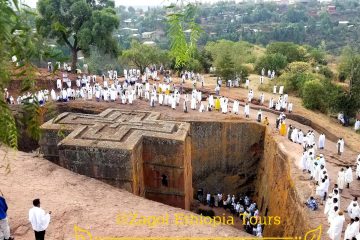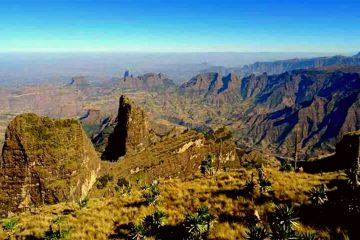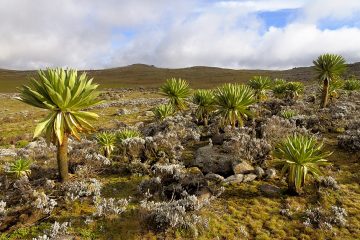Ethiopia is an ancient country in East Africa with remarkable natural and cultural heritage sites. It is also known as the cradle of humankind, where a number of paleontological discoveries have made the country one of the most fascinating places to study the origin of humans and the evolution of culture. Furthermore, southern Ethiopia is rich with culture and tradition and the rift valley is endowed with numerous hot springs, beautiful lakes, and a plethora of unique African wildlife. The passage has a chain of seven lakes, and each of the seven lakes has unique feature of its own.
The southern plains of Ethiopia and the northern deserts of Kenya comprise popular migration routes from north to south and east to west. In Ethiopia, the migratory groups have names such as the Ari, the Banna, and the Hamer, to name only a few. The size of each group can range anywhere from a few thousand people to more than one hundred thousand. Customs and languages do overlap between groups, but each group has its own unique qualities as well. The region has the most rich bio-diversity in Ethiopia. The natural and cultural wealth of the region is part of the great wonders of Africa. Three of the eight UNESCO World Heritage sites of Ethiopia – the Lower Omo valley paleo-anthropological site, the Tiya megalithic archaeological site, and the Konso Cultural Landscape – are located in the SNNPRS. Additional sites in the area, such as the Konso, Fejej, Woyto, and Moche-Borago paleo anthropological sites and the Akirsa, Tuto-Fela, Tutiti and many more Neolithic sites are world famous for the wealth of scientific and historical data they have provided and continue to provide. Thus, the area has greatly contributed towards the understanding of both human biological and cultural evolution, late prehistory, and the history of the Ethiopian peoples.
There are various natural wonders that are now demarcated within the Sinkile, Nech-sar, Mago, Omo, and Maze National Parks. These parks harbor some of the rarest species of animals that are endemic to Ethiopia. The region also has variety of aquatic animals in its pristine Rift Valley Lakes, including the Abaya, Chamo, Chew-bahir (Lake Stefany) and Omo (Lake Turkana). The Omo and many minor rivers irrigate the land and sustain life in the area. The region owes its natural diversity partly due to geological factors that created the very high mountains (from the Garage Mountains in the North, the Gamo Mountains in the Middle, the Hammer Chains in the South, and its western mountains) and the Ethiopian Southern Part of Great East African Rift valley. For animal lovers, the rift valley is paradise – the place is crawling with African wildlife. The hot springs here are highly recognized for their therapeutic purposes, and people come from all over the country to bathe in them – make sure you visit them at some point throughout your time here.




